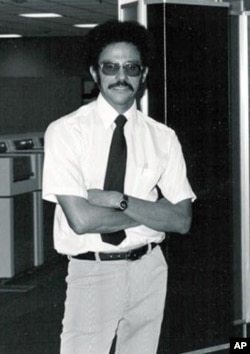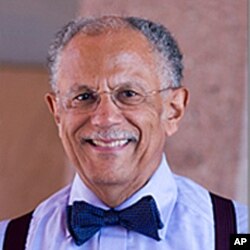Warren Washington has dedicated his life to solving the mysteries of the world's changing climate.
As a boy in the 1930s, scanning the night skies through his father’s telescope, he was already thinking like a scientist.
"I always had a strong feeling that I wanted to understand everything," says Washington. "I wanted to know how things worked."
Breaking barriers
He held onto that feeling, even after a high school science advisor told him that, because he was an African-American, he should train for something practical such as business.
"He didn’t think that a child with my background should bother getting a science education."
In those days, even when African-Americans graduated from college, they were often barred from professional careers. But Washington's parents wanted a better future for their son, so they urged him to follow his dreams.
He was inspired and motivated after reading the biographies of such towering scientific pioneers as physicist Albert Einstein, inventor Thomas Edison and agricultural chemist George Washington Carver, an African-American.
"It actually convinced me that I could go into science. Because, when you read their life stories, they came from what seemed to be fairly ordinary families, and since I read those books I said, 'Geez, I think I can do this, too.'"
Looking to the skies
Washington’s boyhood interest in the skies was rekindled by an Oregon State physics professor with a passion for climate studies. Washington excelled in physics, a skill which led to a summer job as a research mathematician with scientists who were just beginning to use computers to forecast the weather.
By today’s standards, the machines were primitive. Still, Washington says, if you input accurate data about today’s weather, those computers could predict tomorrow’s weather.
"What surprised everyone is that the skill of the forecast was pretty much the same as a skilled forecaster. So everyone immediately saw great promise in this new tool."
Washington earned a PhD in atmospheric science, the second African-American in the United States to do so.
In 1963, he drove to Boulder, Colorado, to join the federally-funded National Center for Atmospheric Research (NCAR). Researchers at NCAR had a more advanced tool for scientists - a room-sized complex of giant computers, each the size of a modern refrigerator.
"They ran very slow," says Washington. "And I wouldn’t be surprised if the amount of memory we had was smaller than you can get on an I-phone."
Climate influences
Still, those computers helped NCAR scientists forecast the weather several days in advance. And with Washington’s expertise, their capabilities continued to expand.
At first, NCAR focused on natural influences on climate, such as volcanic eruptions and solar flares. Then, in 1978, Washington says, the U.S. Department of Energy asked the scientists to study something that was not natural.
"They wanted to accelerate the use of our models for investigating climate change caused by increasing carbon dioxide. In other words, man-caused."
NCAR’s models revealed that as human activities such as coal-fired power plants generate more CO-2, weather throughout the world will grow more severe.
Innovator
Washington improved the power of the computer models and explained them to policy makers.
"I’ve actually worked with five presidential administrations, most of them with presidential appointments."
These days, NCAR uses high-speed supercomputers to store and analyze data ranging from how oceans and sea ice affect the climate to how plants - and burning coal and even burning grass - influence what may happen in the years ahead. Washington says the resulting data is widely available.
"Our models can be downloaded by anyone, and they can use some of the models to do climate change studies."
NCAR’s leading edge climate modeling has won Washington growing recognition and acclaim. In 2007, he received a Nobel Prize as a member of the United Nations’ Intergovernmental Panel on Climate Change.
So the child who once read biographies of scientists has himself become a world-famous scientist. But Washington says his primary motivation is something deeper. Just as his parents wanted a better future for their children, he wants the same for his.
"I have 16 grandchildren, and one great grandchild, and I’d like to see the world better at solving problems and climate change is one of those problems."
And while Washington continues to improve NCAR’s climate models, he’s also writing an autobiography to inspire others, he says, to become scientists and perhaps join his effort to study and combat global climate change.















